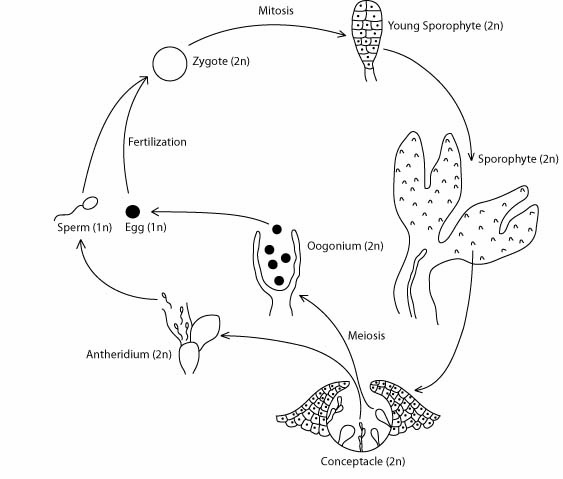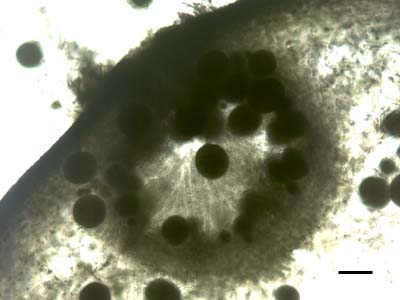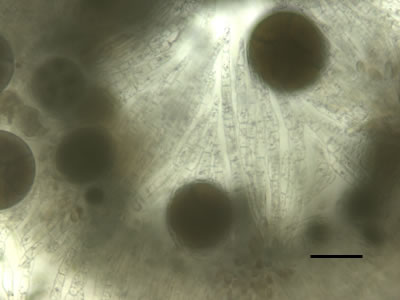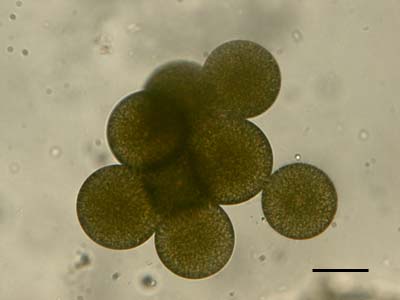
Rockweed
Life History
|
|
Fucus Life History F. distichus, a monoescious brown alga, displays a diplontic life history with no free-living haploid state (1). The adult sporophyte exhibits a flattened thallus that terminates with the fertile receptacle. This swollen, most distal portion of the thallus contains the conceptacles, which produce the oogonia and antheridia (1). Once fertile, the oogonia and antheridia undergo meiosis and produce haploid eggs and sperm. These gametes will be released and will fuse to form the diploid zygote. The zygote will then undergo mitosis to form the adult diploid sporophyte.
The Conceptacle The conceptacle, shown in the figure to the left, of F. distichus produces the oogonia and the antheridia in either seperate or single conceptacles. Conceptacles are lined with flattened cells that produce branched paraphyses (2). These filamentous cellular projections are arranged in an inwardly facing pattern and are characterized by having a low-diversity intracellular composition (2). The antheridia are generally formed on the paraphyses and are distinguished by dense cytoplasm, a large central vacuole and chloroplasts with reduced thylakoids (2).
Oogonia development Species in the genus Fucus produce oogonia that undergo three nuclear divisions that produce eight haploid nuclei (2). Cytoplasmic cleavage follows, resulting in the formation of eight uninucleate eggs (2). Differential maturation of oogonia is readily visible under a compound scope; cleavage furrows can be distinguished in the last figure of this section.
|
-
Vijayaraghavan, M.R. et al. Brown Algae: Structure, ultrastructure and reproduction. APH Publishing Corp 1998.
-
Lee, R.E. Phycology: 2nd Edition. Cambridge University Press 1980, 1989.




